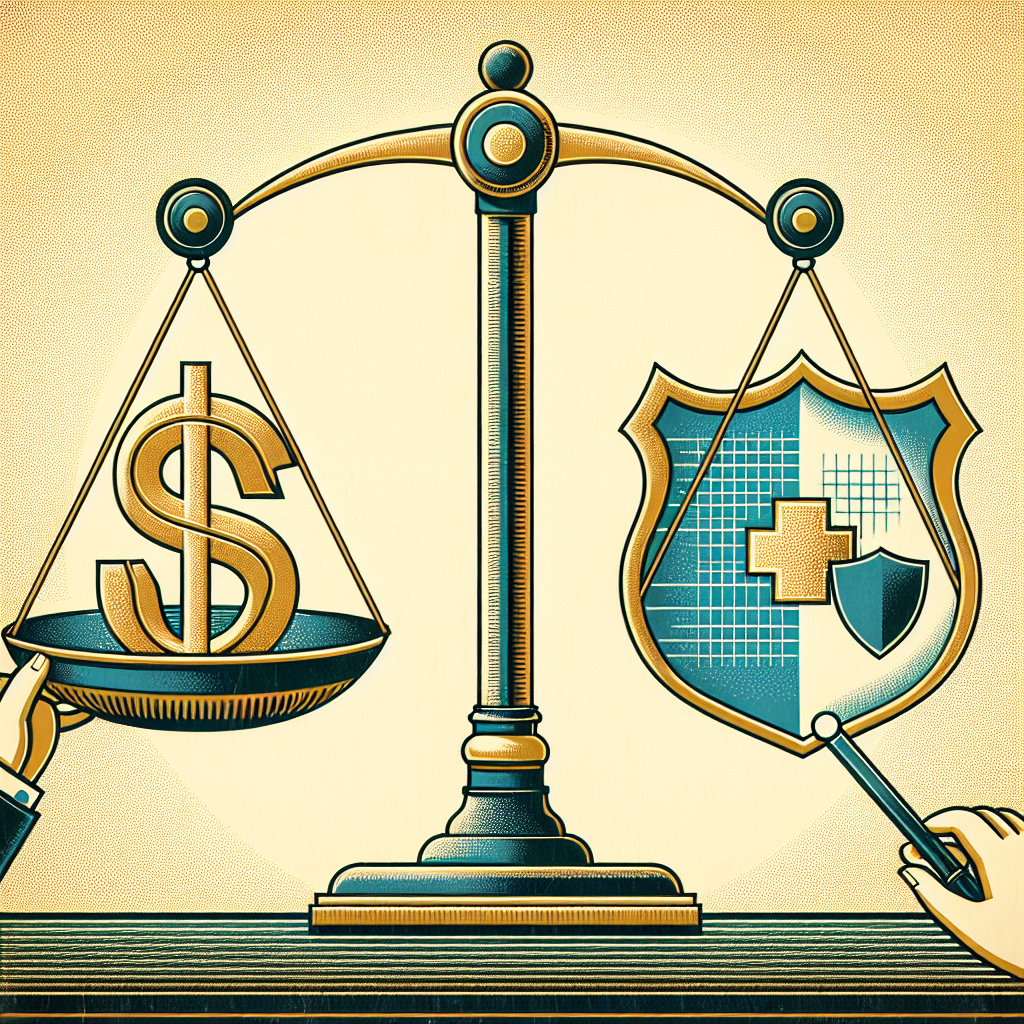Filed under Health Insurance on
Understanding Stop-Loss in Health Insurance Coverage

In the intricate world of health insurance, understanding specific terms is crucial for making informed decisions about coverage. One such essential term is "stop-loss." For many policyholders and even business owners navigating health plans, understanding stop-loss coverage presents the potential for significant benefits. This article aims to demystify stop-loss in health insurance coverage, providing insights into its functionalities, benefits, and industry applications.
What is Stop-Loss in Health Insurance?
Stop-loss insurance serves as a protective measure for self-insured employers, capping the total expenses at a certain limit. Essentially, once the plan's costs surpass this predetermined threshold, the stop-loss coverage kicks in. But why do employers opt for this kind of insurance?
In simple terms, stop-loss insurance provides financial relief by protecting against unforeseen high claims that could otherwise devastate an organization’s budget. Understanding stop-loss is vital for businesses to manage risks effectively while offering robust health benefits to employees.
Who Needs Stop-Loss Insurance?
Companies opting for self-funded health plans typically seek out stop-loss coverage. With rising healthcare expenses, self-funded plans can offer savings by eliminating insurance carrier profits and premium taxes. However, this also exposes companies to the unpredictability of healthcare costs. This is where understanding stop-loss becomes not only pivotal but essential.
Types of Stop-Loss Coverage
Understanding stop-loss coverage involves dissecting its types. Broadly speaking, stop-loss in health insurance comes in two variants:
Specific Stop-Loss
This type protects against high claims from individual employees. If an employee incurs exceptionally high medical expenses, specific stop-loss insurance covers costs that exceed a specified amount. For example, if the threshold is $50,000 and a single employee's medical expenses reach $80,000, the stop-loss insurer pays the $30,000 excess.
Aggregate Stop-Loss
Unlike specific stop-loss, which focuses on individual claims, aggregate stop-loss covers the employer when the total claims for all employees exceed a certain threshold. If an employer anticipates annual claims to be a set amount but ends up with unexpected high total claims, aggregate stop-loss provides the necessary cushion.
Benefits of Incorporating Stop-Loss Coverage
Understanding stop-loss isn't solely about risk management; it also plays a significant role in financial planning and stability for employers.
- Financial Protection: Employers avoid the detrimental effect of high claims, ensuring stable and predictable expenses.
- Cash Flow Management: Stop-loss coverage allows companies to manage cash flow more effectively by avoiding significant unexpected medical payouts.
- Customization: Understanding stop-loss helps tailor coverage to match the specific needs of the company, facilitating unique necessary protections.
- Improved Employee Benefits: Companies can offer comprehensive health benefits without the constant fear of financial overextension.
How Stop-Loss Works: An Example
Imagine a mid-sized company, XYZ Corp, which has opted for a self-funded health plan. Their plan includes both specific and aggregate stop-loss insurance. Suppose one employee unexpectedly faces a significant medical event costing $120,000, while XYZ Corp's specific stop-loss threshold is $70,000. Because of their understanding stop-loss strategy, the insurer would cover the $50,000 exceeding the threshold.
Furthermore, if the collective health claims surpass the firm’s aggregate threshold of $1 million during the year, the stop-loss insurer would cover costs beyond this limit, ensuring XYZ Corp stays financially stable.
Industry Trends and Expert Insights
The marketplace for stop-loss insurance continues to expand, adapting to changing healthcare landscapes and consumer needs. According to health industry expert Jane Doe, "Organizations increasingly appreciate the balance stop-loss coverage provides, marrying cost-effectiveness with substantial risk mitigation."
Recent trends also highlight a rise in tailored stop-loss products. With companies seeking personalized plans to mirror their distinct employee demographics and regions, insurers have innovated with flexible solutions, including options for mental health or chronic condition coverage—a nod towards integrating stop-loss within broader healthcare frameworks.
Considerations for Employers
When weighing the benefits of understanding stop-loss, employers should consider their current financial situation, the demographics of their workforce, and historical health claim data. Expert John Smith suggests, "Analyzing past claim patterns can guide employers in selecting appropriate stop-loss thresholds, ensuring they balance risk while optimizing cost savings."
Challenges with Stop-Loss Coverage
While understanding stop-loss provides clear benefits, it also presents challenges, such as:
- Cost Implications: High premiums for stop-loss can erode the financial advantage of being self-insured. It's crucial to evaluate whether stop-loss expenses align with your overall saving goals.
- Complexity: Navigating stop-loss policies requires understanding intricate clauses and conditions, demanding thorough analysis and often, professional guidance.
- Claims Process: Disputes over claim reimbursements can arise, leading to delays. Efficient handling of these processes is essential to fully benefit from stop-loss coverage.
Steps to Implementing Stop-Loss Coverage
To effectively implement stop-loss in health insurance, consider the following steps:
- Assess Financial Capability: Review your company's financial health to determine how much risk you're willing to bear and how much should be transferred to insurers.
- Compare Providers: Evaluate different stop-loss insurers, focusing on factors like reputation, range of coverage, claims process, and customer support.
- Analyze Claims Data: Use historical claims data to set realistic thresholds and anticipate potential healthcare expenditures.
- Customize Policy Options: Customize your policy to cover specific potential risks unique to your workforce, ensuring comprehensive protection.
- Engage Experts: Consider consulting with healthcare or insurance experts to facilitate optimal policy decisions and implementation strategies.
The Future of Stop-Loss Insurance
As healthcare costs continue to rise globally, the prevalence and sophistication of stop-loss policies are expected to increase. Advancements in technology, including predictive analytics and real-time data usage, will further enhance the customization and efficiency of stop-loss coverage. Companies that invest time in understanding stop-loss today will undoubtedly find themselves better positioned to navigate tomorrow's health insurance landscape.
Ultimately, understanding stop-loss in health insurance isn't merely about grasping the current financial mechanisms. It’s about future-proofing businesses against unforeseen healthcare challenges, ensuring they can continue to offer competitive, reliable benefits to their most valuable resource—their employees.
By embracing stop-loss insurance, employers make a strategic decision that safeguards financial health while acknowledging the unpredictable nature of healthcare expenses, thereby fortifying their commitment to employee welfare.





